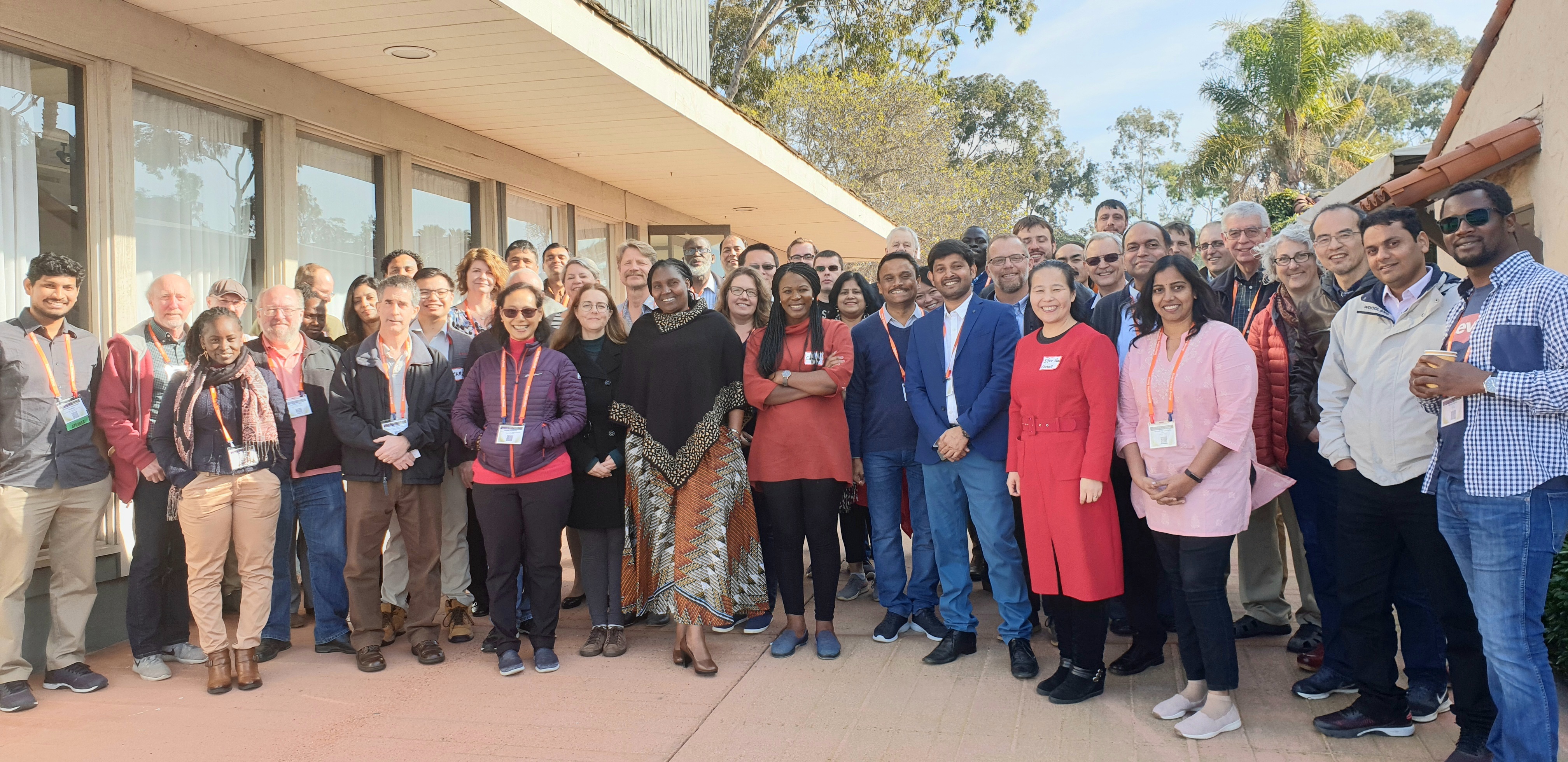
On January 15, the CGIAR Excellence in Breeding Platform (EiB) held a one-day workshop with users of its genotyping and data analytics services at the 2020 International Plant and Animal Genome (PAG) conference, held in San Diego, USA.
Through the High-Throughput Genotyping (HTPG) Project, EiB offers access to world-class genotyping services at reduced cost by aggregating demand from member breeding programs. The project is integrated with the Genomic Open-source Breeding Informatics Initiative (GOBii).
The morning focused on HTPG progresses, updates, and user feedback while the afternoon highlight GOBii marker application tool demonstrations and genomic selection application use cases. The day finished with energizing gallery walk breakout sessions and report-back on new requirements and adoption.
Rajaguru Bohar, HTPG project coordinator, explained how the project has grown since 2016, offering low-density genotyping for over 100 traits in 18 crops, for eight CGIAR centers and over 30 NARS partners, in addition to the private sector, in 28 countries. The total volume of business brokered by the project to date is around US $2 million. The project also supports training assessments and training to ensure breeding programs are able to use the right services to improve the rate at which they can deliver improved varieties to farmers.
HTPG users gave testimony of how the project is supporting the International Maize and Wheat Improvement Center (CIMMYT) to breed faster for disease resistant and nutritious maize varieties, and healthier (better fibre content) wheat varieties. Rajeev Gupta (the International Crops Research Institute for the Semi-Arid Tropics - ICRISAT) also reported how the service supported screening for disease and stress resistance in addition to nutrient quality in five crops, particularly Groundnut and Sorghum).
CIMMYT also reported on plans to better communicate genetic marker information with national agricultural research programs, and urgent plans to scale up the use of mid-density markers for maize in Africa.
Mid-density genotyping looks for a greater number of genetic variations (known as single nucleotide polymorphisms, or SNPs) in each sample, and can complement low-density genotyping to efficiently assess the value of breeding materials for different traits. EiB's Eng Hwa Ng reported on negotiations with service providers to offer this service and reduce costs from US $11-10 per sample to around $8 per sample in 2021.
Centers should also benefit by integrating their genotyping workflows with the breeding informatics systems being developed under EiB, and that will eventually be integrated within the Enterprise Breeding System (EBS) for end-to-end data management and decision support, as described by Star Gao (Cornell University).
Kelly Robbins from EiB module 5 facilitated demonstrations and presentations given by the GOBii global team; with Liz Jones based at Cornell University, Carlos Ignacio from IRRI, Andrew Kowalczyk from DArT, Australia, Umesh Rosyara from CIMMYT and Hima Kudapa and Manish Roorkiwal from ICRISAT presenting new molecular breeding tools for genotyping data QC, pedigree verification, marker-assisted backcrossing and genomic selection. These tools connect seamlessly to the GOBii genomic data management system using a standard computer language called BrAPI (Breeding API) that can be re-used by other systems and will improve the efficiency of molecular breeding for all breeders.
To conclude the meeting, attendees formed breakout groups to identify new decision support and sampling requirements that should be prioritized under EiB coordination, in addition to ensure that these tools and services are adopted by CGIAR, NARS and private sector breeding programs to better serve farmers in low- to middle-income countries.